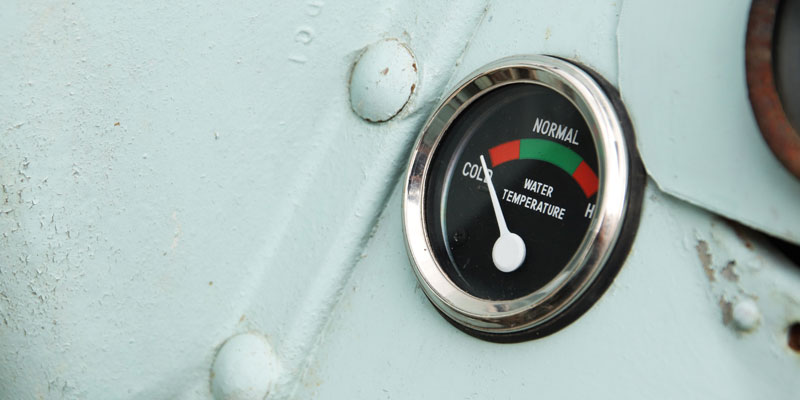Your hot water heater plays a major role in the household. From providing relaxing showers to clean dishes, this appliance offers hot water on demand. It’s often a mysterious appliance in the household, however. They have very few settings, but temperature is a feature that can be adjusted. Learn all about the best temperature for the tank so that you can prolong its lifespan.
Focusing on 120-Degrees Fahrenheit
Our experts in the water-heater industry usually suggest 120-degrees Fahrenheit as a maximum temperature. This level provides a hot enough temperature for showers, dishes and laundry. However, it’s not the hottest setting on most appliances. Take a look at the reasoning behind this temperature selection so that your Winston-Salem tank remains useful and safe.
Money Savings
One of the main reasons why this temperature is a favorite among residents is the money savings. It’s simply less expensive to run the tank at a lower temperature. You’ll spend less money each month because the energy needed to maintain this temperature is minimal.
Most people want their water heater to remain at a perfect temperature 24 hours a day, so the energy savings can be significant with a 120-degree F. choice.
Ask your favorite plumber to adjust the setting if you aren’t sure of the changes. You’ll familiarize yourself with the tank, which is always a valuable lesson.
Reduce Scalding Concerns
For households with young children, burns are a real concern when it comes to running water. Washing hands and taking baths are the primary ways that burns can happen if the water is too hot.
Set your water heater to 120-degrees F., and there are fewer chances at a burn. A person would have to hold his or her hand under the water for several seconds to receive a burn at this temperature. The body will automatically react to the temperature and pull away, for instance.
Environmental Care
Another good reason to choose a lower temperature on your water heater is environmental concerns. Generally, higher tank temperatures require extra energy. The majority of energy resources come from natural elements, such as fossil fuels.
To reduce your energy use, set the tank to 120-degrees F. NPR suggests using a thermometer on your tap water to verify the settings. Run the hot water with the thermometer placed under the stream. Adjust the tank’s settings based on the thermometer’s reading.
You can also read up on the tank’s settings through the instruction manual. There may be an exact dial setting to reflect the lower temperature.
Fights Mineral Buildup
Tanks constantly hold water that’s full of minerals. All tap water has some level of minerals, which can accumulate in the water heater. Add the hottest temperature to the tank, and you have a system that will build up minerals in rapid time.
These minerals contribute to tank degradation and eventual failure. Save your plumbing from a major leak with a low tank temperature. Lower temperatures tend to reduce mineral buildup, although it can’t prevent it outright. Consistent low temperatures can give a tank several more months or years of life in some cases.
Choosing 140-Degrees Fahrenheit
There are specific instances when 120-degrees F. won’t work out for a Winston-Salem household. The hottest setting at 140-degrees F. is possible on most tanks. Learn how this setting can benefit a home in other ways.
Appliance Needs
Most households have dishwashers of varying ages. Some appliances pre-heat the water, whereas other models rely on the tank for the hottest water. If you have a dishwasher without a pre-heat feature, setting the household tank to 140-degrees F. is recommended by our plumbers.
This temperature provides the necessary heat to wash, rinse and sanitize dishes. A lower temperature can diminish the washer’s ability to clean efficiently. Your dishwasher’s manual will normally suggest a temperature level so that you know what works for your model.
Large Households
A smaller household can get away with a tank set at a lower temperature. There’s not much demand for the water. In contrast, large households can require water almost around the clock. Showers, dishwashers, laundry washers and sinks can all pull hot water from the tank at once. Set the temperature at the higher setting when you have a large demand for water.
For the Immunocompromised Population
No tap water is perfectly filtered or clean. There will always be some bacteria that remain in the stream. In most cases, a tank set at 120-degrees F. can kill off general bacteria. There’s a rare exception, however, with another bacteria type.
Referred to as the Legionnaires’ disease bacteria, this microbe can be harmful to anyone with a compromised immune system. Young children, elderly people and chronic-disease sufferers should consider a high tank temperature to fight off this bacteria. It can survive at 120-degrees F. Although it’s rare, the bacteria can be harmful to someone who can’t fight off disease very well.
Keep in mind that young and elderly people can also be more prone to scalding when you fight off this bacteria with a 140-degree F. tank. Weigh your considerations before altering your system.
Choose the Temperature Setting That Makes Sense for Your Household
A qualified plumber is a great resource when you have tank questions. Contact Bodenheimer Plumbing Services, Inc. out of Winston-Salem, NC, today. Our team can go over the tank and suggest any necessary maintenance. Taking care of these critical appliances will protect the home’s value in the end.


